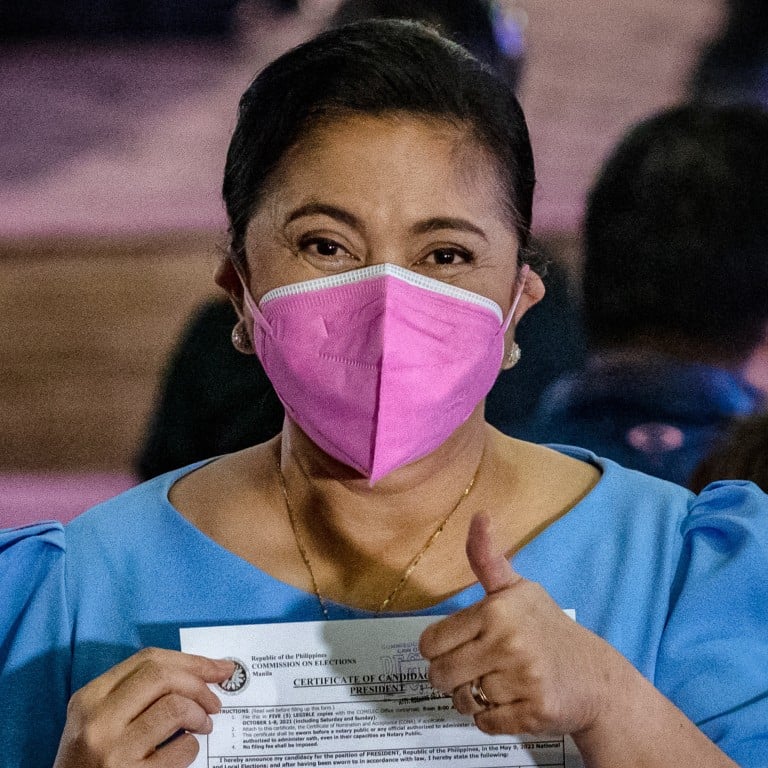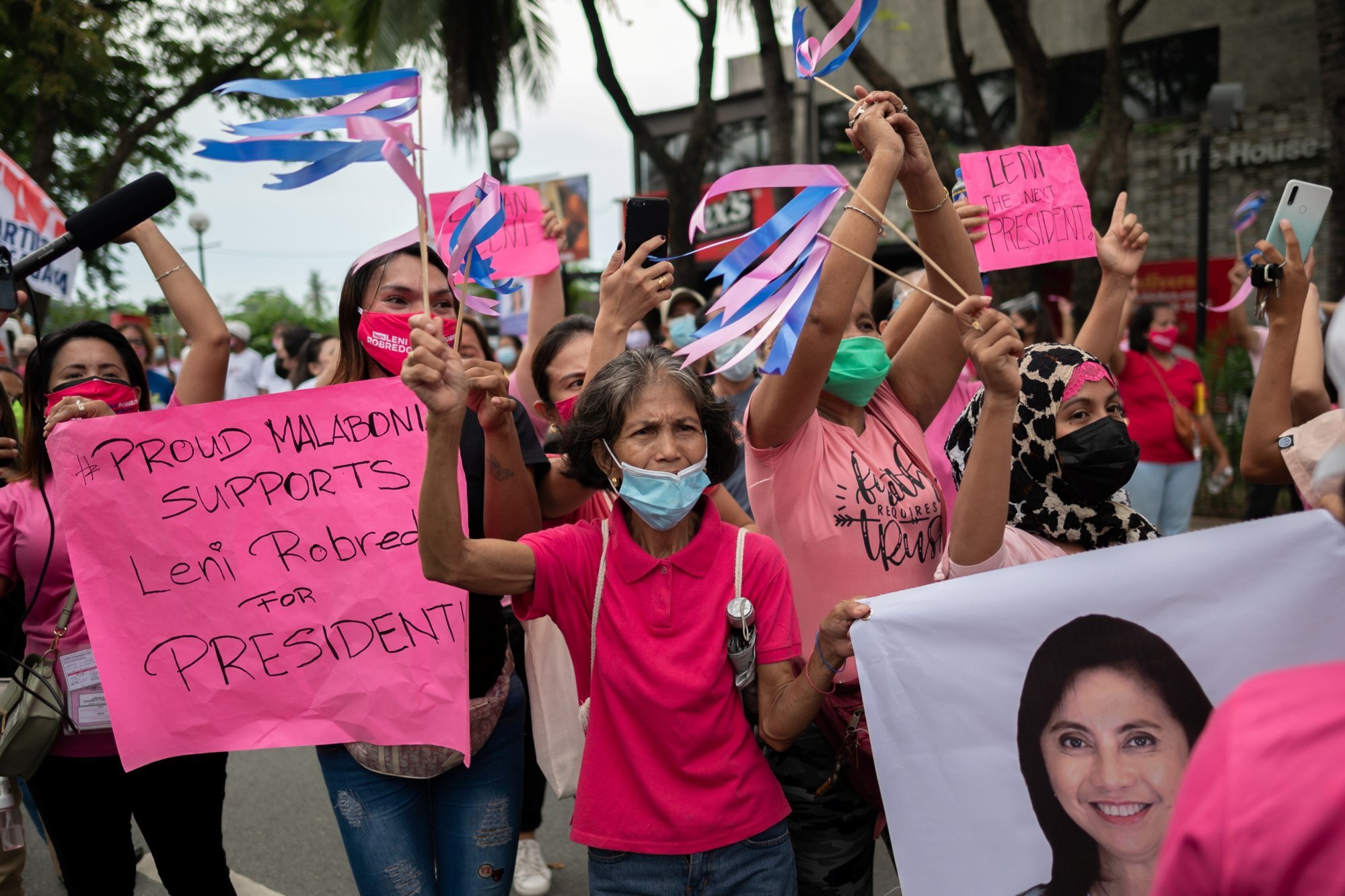
Could the colour pink swing the Philippine presidential election for Leni Robredo?
- VP Robredo’s ‘masterstroke’ choice of campaign colour – a departure from the traditional pro-democracy yellow – has mobilised supporters across the country
- Pink is ‘a metaphor of resistance against toxic masculinity’ – and may help her beating her chief rival, Ferdinand Marcos Jnr, son of the brutal dictator
What seemed like an innocuous palette choice has turned out to be a masterstroke, galvanising and mobilising thousands of supporters, and creating a wave of fuchsia that’s sweeping the country.
Over the past few weeks, Robredo’s rallies and provincial sorties have been marked by massed crowds dressed in pink, wearing pink masks, waving pink signs and flags, and riding pink vehicles.
Companies and schools have indicated their political choices by bathing their buildings in soft rosy coloured lighting. Even lugaw, the yellow rice porridge associated with Robredo – currently the vice-president – has turned up in a pink version.

A new word has even entered the political lexicon: the Tagalog word for ally, kakampi, has become kakampink.
On November 21, megastar television host Kris Aquino said on Instagram she would be supporting one presidential candidate but didn’t say who. However, she told her millions of fans: “You all know what my favourite colour is: pink.”
When her campaign started, Robredo was the underdog among the major candidates, but now one opinion survey – by the Social Weather Stations – puts her as second after Ferdinand Marcos Jnr, son of the late brutal dictator who ruled the country under martial law in the 1970s. The colour may well have played a role in energising her support.
Seven Philippine presidential hopefuls, from ‘Bongbong’ Marcos to Leni Robredo
Robredo’s spokesperson, Barry Gutierrez, said the campaign had picked pink as its signature colour after being urged to do so by volunteer groups.
When she announced her decision to run, Robredo wore a blue dress with a pink ribbon.
It was a way of moving away from a colour that has acquired too much baggage. Yellow – dilaw – has long been the traditional colour of pro-democracy groups in the Philippines, and in her successful campaign for the vice-presidency in 2016, Robredo ran as a dilawan.
However, yellow has lost its potency of late, having been appropriated by so many parties that it has become easy for critics to mock, and dilawan is now a derogatory term.

Visual artist Toym Leon Imao, who has designed several national shrines and sculpted a statue of national hero Jose Rizal, said experiments showed that pink – in particular the shades Baker-Miller and Cool Down – had “been observed to reduce hostility and tendencies for violent and aggressive behaviour”.
“Since VP Leni is currently the sole female presidential candidate in a field dominated by male counterparts, the choice for her campaign colours further sets her apart, and has become a visual comfort zone of many supporters to rally around.”
Political analyst Jean Franco of the University of the Philippines said the choice of pink was in some ways surprising. “It is not a primary colour, but I understand the change because in a tight election, she needed to rebrand herself.”
Philippine presidential election: the candidates and their China policies
Franco said that “some are against it because it may be associated with women and anything feminine, for this reason, it may not resonate with others who think of a leader as supposedly having masculine attributes”.
But “others like it because they probably understand that it represents dissent to authoritarianism … just like the women who protested against the victory of Trump.”
The history of yellow as the colour of dissent and reform in the Philippines dates back to 1983, when opponents of the dictator Marcos used the song Tie A Yellow Ribbon to welcome home opposition figure Benigno “Ninoy” Aquino Jnr on his return from self-imposed exile.

After Aquino was murdered at the airport while in the hands of Marcos’ security personnel, yellow, most famously in the form of ribbons, became the colour of pro-democracy groups. It became associated with the 1986 “People Power” uprising that chased Marcos out of the country, and it was the signature colour of the late President Corazon Aquino – Aquino Jnr’s widow.
Robredo’s switch to pink has not only inspired followers, it has also baffled foes more used to mocking yellow. Some have accused Robredo of stealing the signature colour of the breast cancer awareness campaign, while others have coined the term pinklawan to continue from where dilawan left off.
Visual artist Imao said of Robredo’s choice of pink: “I consider it a masterstroke in terms of imaging a visual metaphor of resistance against toxic masculinity.”
He said pink “has come to symbolise empathy, and a nurturing persona that is akin to the image befitting the mothers of this nation”.
“The opposition has hit a home run with pink in my opinion.”
The Philippine presidential election is expected to take place on May 9, 2022.

